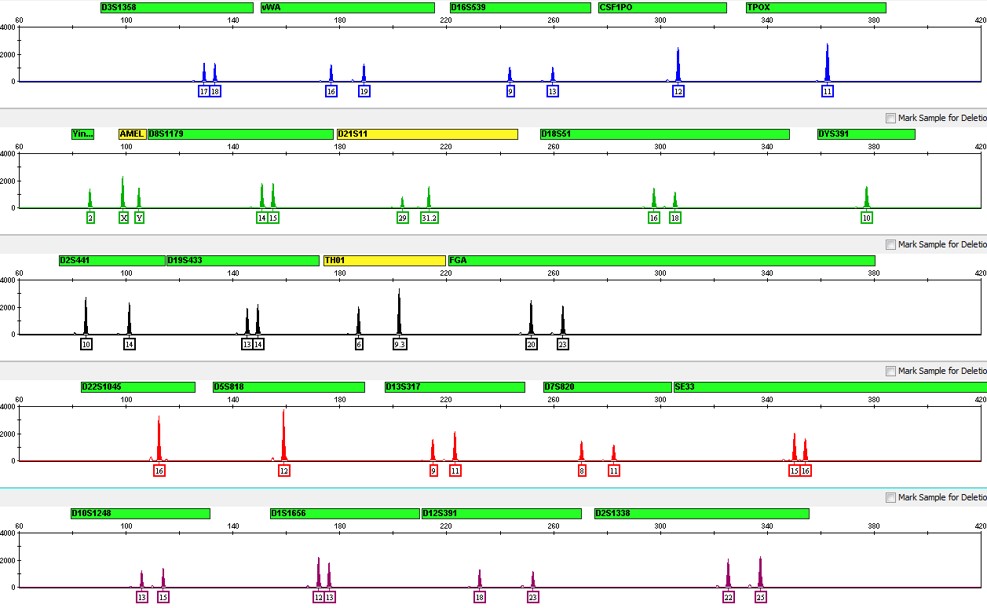Nearly forty years ago, a revolution that would alter our understanding of genetics began quietly in a lab at the University of Leicester (UK). A team of scientists headed by Dr. Alec Jeffreys had been studying highly variable regions of human DNA for several years. Sometimes during the DNA copying process, the enzyme responsible can slip on the template and "stutter". Jeffreys and his team noted that the resulting "minisatellites" - short regions of repetitive DNA - had a high amount of variability from person to person. They used a technique of cutting the DNA with different enzymes before running it on a gel to visualize this variability. In September of 1984, while analyzing the DNA of his technician and her parents, Jeffreys had a eureka moment and realized their approach had created the first DNA fingerprint or profile.
The first time this technique was used in a forensic science capacity was in 1985. In November 1983, a 15-year-old girl Lynda Mann was found sexually assaulted and strangled to death in a field not far from her home in the village of Narborough in Leicestershire. A police officer who had heard about Jeffreys work at the University asked if it might be possible to create a DNA fingerprint from the semen left behind at the scene. Before long, another 15-year-old Dawn Ashworth was found sexually assaulted and murdered in a manner similar to Lynda in the neighboring village of Enderby. Jeffreys confirmed that the same individual was responsible for both attacks and eliminated the initial suspect. Police collected a DNA sample from all the men in the area to screen for the perpetrator. No one was a match, leaving investigators perplexed.
Finally in August of 1987 there was a break in the case. A coworker of Colin Pitchfork told other colleagues at a pub that he had provided a DNA sample for Colin because Colin told him he didn't want to be "harassed by the police over prior convictions for indecent exposure". One of the coworkers reported this admission to the police. Law enforcement promptly found the real Colin and got a DNA sample, which matched the semen found at both crime scenes. Colin Pitchfork was convicted and jailed in 1988 with a minimum sentence of 30 years. He was released in 2021, but returned to jail 2 months later for violating parole by approaching a lone woman. Just this week, the parole board has once again deemed Mr. Pitchfork suitable for release. There has been considerable public outcry in response to this decision.
While the basic tenet of Jeffreys approach to DNA profiling (exploitation of variable regions of DNA) has remained the same, the technique has evolved to focus on smaller segments of repetitive DNA known as short tandem repeats or STRs. Scientists amplify dozens of STRs scattered around the human genome to determine how many repeats are present for that loci or location. Rather than running the DNA mixture through a gel like Jeffreys did, the samples are now run through a very small capillary tube and the results are captured by software on the computer attached to the machine.
Remember that for each STR loci there will be two copies analyzed because each parent contributed one allele or version of the STR to their child. At present, the FBI recommends examining a minimum of 20 STR loci to create a DNA profile. Due to the number of loci analyzed, the likelihood of someone having the exact same pattern of repeats as another individual is so extremely small as to essentially be improbable. The exception to this, of course, is monozygotic or identical individuals. An example of what a modern DNA profile looks like is below (Source: NIST).
Once an STR profile has been generated, it can be compared against other STR profiles. CODIS is the FBI's software program that runs a variety of DNA databases. For example, there are separate databases that fall under the CODIS umbrella for criminal offenders and missing persons.
